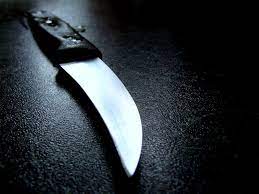In the world of culinary arts and craftsmanship, a sharp knife is a chef’s best friend. However, over time, even the finest blades can lose their edge, leading to decreased performance and safety hazards. Understanding how to assess knife edge fade is crucial for maintaining peak cutting performance and ensuring the longevity of your tools. In this guide, we’ll delve deep into the intricacies of knife edge fade, offering practical insights and expert tips to help you keep your blades razor-sharp.

How to Assess Knife Edge Fade!
What is Knife Edge Fade?
Knife edge fade refers to the gradual deterioration of a knife’s cutting edge over time. This phenomenon occurs due to various factors, including regular use, improper maintenance, and the type of materials being cut. As the edge fades, the blade becomes dull, requiring more effort to cut through ingredients and increasing the risk of accidents. Recognizing the signs of knife edge fade is essential for timely intervention and preservation of cutting performance.
Signs of Knife Edge Fade
- Blunting: A once-sharp knife gradually loses its ability to slice effortlessly through food, requiring increased pressure to achieve the desired results.
- Uneven Cutting: As the edge deteriorates, you may notice inconsistencies in cutting, such as tearing or jagged edges on sliced items.
- Increased Slippage: Dull blades are more prone to slipping off surfaces, posing a safety hazard to the user.
- Visible Damage: Inspect the cutting edge for signs of chipping, rolling, or deformation, indicating wear and tear.
Assessing Knife Edge Fade
To accurately assess the fade of a knife’s edge, follow these steps:
- Visual Inspection: Examine the cutting edge under adequate lighting for any visible signs of damage or wear. Use a magnifying glass if necessary to inspect finer details.
- Paper Test: Test the sharpness of the blade by attempting to slice through a piece of paper. A sharp knife should cut cleanly and effortlessly, while a dull blade will struggle and tear the paper.
- Fingernail Test: Gently run your fingernail perpendicular to the cutting edge. A sharp blade will catch on your nail, while a dull one will slide smoothly without resistance.
- Cutting Performance: Evaluate the knife’s cutting performance on various ingredients, paying attention to ease of slicing and the resulting quality of cuts.
Preventing Knife Edge Fade
To prolong the sharpness of your knives and prevent edge fade, consider the following tips:
- Regular Honing: Use a honing steel to realign the blade’s edge and maintain sharpness between sharpening sessions.
- Proper Storage: Store knives in a knife block, sheath, or magnetic strip to protect the edge from damage.
- Avoid Hard Surfaces: Refrain from cutting on hard surfaces like glass, stone, or metal, as they can dull the blade prematurely.
- Routine Maintenance: Clean and dry knives immediately after use to prevent corrosion and degradation of the cutting edge.
Conclusion
In conclusion, understanding how to assess knife edge fade is essential for maintaining the performance and longevity of your blades. By recognizing the signs of fade, performing regular assessments, and implementing proper maintenance techniques, you can ensure that your knives remain razor-sharp and ready for any culinary challenge. Take care of your knives, and they will take care of you in return.
FAQS
How often should I sharpen my knives to prevent edge fade?
It depends on how frequently you use your knives and the types of materials you cut. As a general rule, consider sharpening your knives every 1-3 months for regular home use. However, professional chefs may need to sharpen their knives more frequently due to heavy usage.
Can I use a honing steel to fix edge fade, or do I need to sharpen the knife?
A honing steel is ideal for realigning the edge of a knife and restoring its sharpness between sharpening sessions. However, if the blade is significantly dulled or damaged, it may require sharpening using a whetstone or knife sharpener.
What are the common causes of knife edge fade?
Knife edge fade can occur due to factors such as regular use on hard surfaces, improper cutting techniques, exposure to acidic or corrosive materials, and inadequate maintenance practices. Identifying and addressing these factors can help prevent premature dulling of the blade.
How can I tell if my knife is dull or if it just needs honing?
A simple test involves running your fingertip lightly along the cutting edge. If the blade feels rough or catches on your skin, it likely needs honing to realign the edge. However, if the blade feels smooth but struggles to cut through food, it may require sharpening to restore its sharpness.
Are there specific cutting techniques that can help prolong the sharpness of my knives?
Yes, using proper cutting techniques can help minimize edge wear and prolong the sharpness of your knives. Avoid twisting or prying motions, as these can damage the edge. Instead, use a smooth, rocking motion when slicing and chopping, and ensure that your cutting surface is appropriate for the task at hand. Additionally, always use a cutting board to protect both your knives and your countertops.
